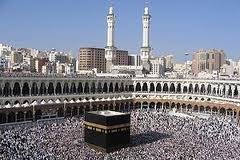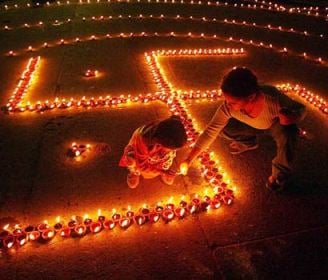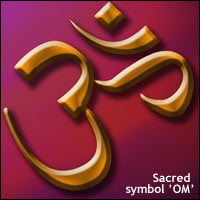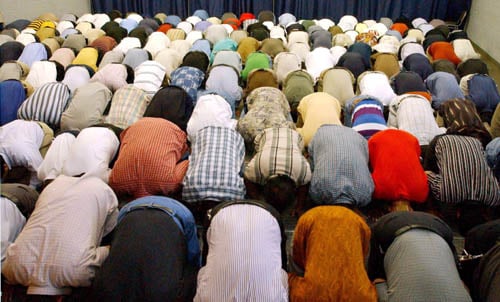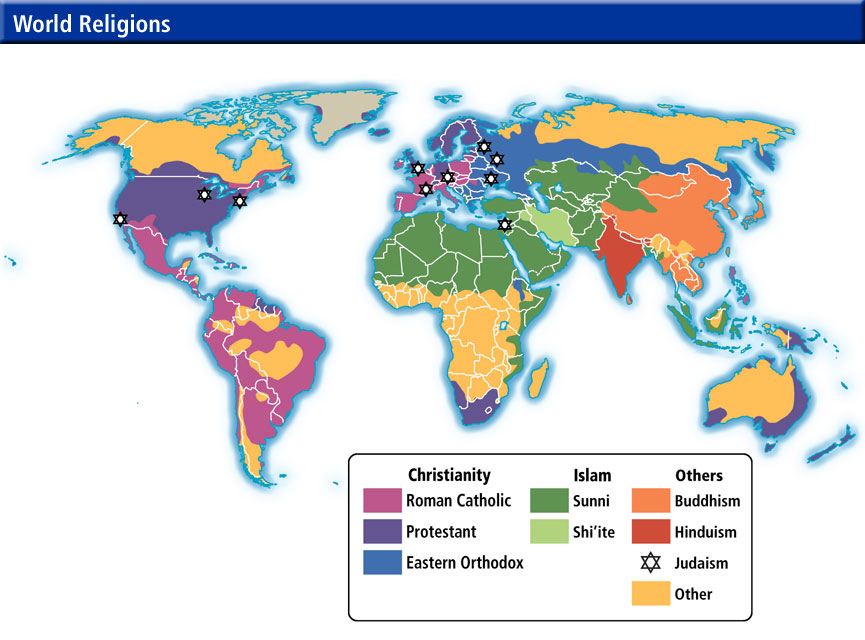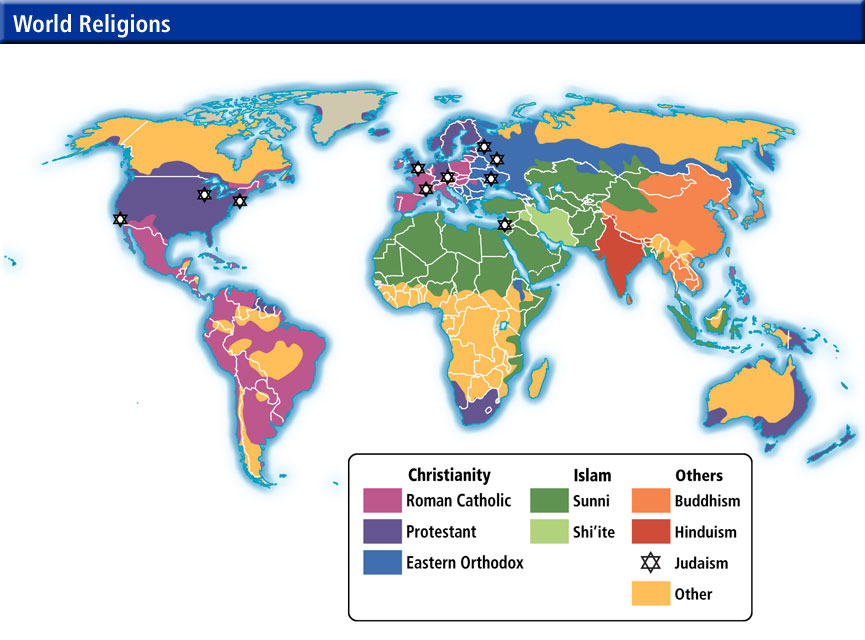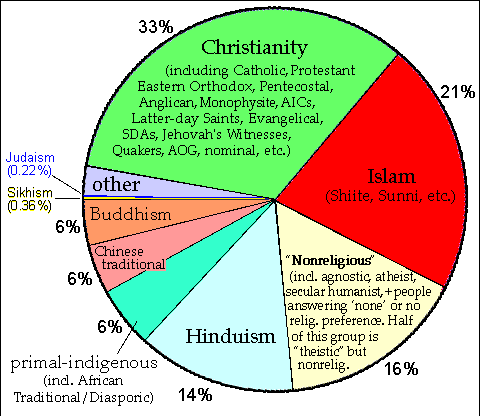Test Your Knowledge Of Five Major World Religions

This test assesses your knowledge of the five major world religions.
- 1.
A follower of Islam is called a __________________________.
- A.
Brahman
- B.
Missionary
- C.
Muslim
- D.
Hindi
Correct Answer
C. MuslimExplanation
A follower of Islam is called a Muslim. Islam is a religion that originated in the 7th century in the Arabian Peninsula and its followers are known as Muslims. Muslims believe in the teachings of the Prophet Muhammad and follow the principles outlined in the Quran. The term Muslim means "one who submits to God" and it is used to refer to individuals who practice the Islamic faith.Rate this question:
-
- 2.
The founder of Islam is ___________________.
- A.
Siddhartha Gautama
- B.
Abraham
- C.
Jesus
- D.
Muhammad
Correct Answer
D. MuhammadExplanation
Muhammad is the correct answer because he is widely recognized as the founder of Islam. He was born in Mecca, Saudi Arabia, in the 6th century and received revelations from Allah, which were later compiled into the Quran. Muhammad preached monotheism and established the principles and practices of Islam, including the Five Pillars of Islam. He played a crucial role in spreading the religion and establishing the first Islamic state in Medina. Muhammad's teachings and actions continue to shape the beliefs and practices of Muslims worldwide.Rate this question:
-
- 3.
The belief in one god is called ________________
- A.
Monotheism
- B.
Polytheism
- C.
Religion
Correct Answer
A. MonotheismExplanation
Monotheism refers to the belief in one god. This belief is characterized by the worship and recognition of a single, supreme deity. In monotheistic religions, such as Judaism, Christianity, and Islam, the emphasis is on the existence of a singular divine being who is all-powerful, all-knowing, and the creator of the universe. This stands in contrast to polytheism, which involves the belief in multiple gods, and religion, which is a broader term encompassing various beliefs, practices, and rituals related to the worship of higher powers.Rate this question:
-
- 4.
The sacred text (holy book) of the Christians is the _______________.
- A.
Qu'ran or Koran
- B.
Bible
- C.
The Vedas
- D.
The Torah
Correct Answer
B. BibleExplanation
The Bible is the sacred text of Christians. It is a collection of religious texts and scriptures that are considered to be divinely inspired and authoritative. It consists of two main sections, the Old Testament and the New Testament, which contain various books, including historical accounts, teachings, prophecies, and moral guidelines. Christians believe that the Bible is the word of God and serves as a guide for their faith and practice. It is widely regarded as one of the most influential and widely read books in the world.Rate this question:
-
- 5.
The founder of Buddhism is ______________________
- A.
Siddhartha Gautama
- B.
Jesus
- C.
Muhammad
- D.
Abraham
Correct Answer
A. Siddhartha GautamaExplanation
Siddhartha Gautama is the correct answer because he is widely recognized as the founder of Buddhism. Born in present-day Nepal in the 6th century BCE, he became known as the Buddha, meaning "the awakened one" or "the enlightened one." After years of spiritual seeking and meditation, he attained enlightenment under a Bodhi tree, and then began teaching the Four Noble Truths and the Eightfold Path, which became the foundation of Buddhism. His teachings and philosophy have had a profound impact on millions of people around the world, making him the central figure in the development and spread of Buddhism.Rate this question:
-
- 6.
Some of the sacred texts of the Hindus include __________________
- A.
The Torah and the Hebrew Bible
- B.
The Qu'ran and the teachings Abraham
- C.
The Vedas, Maharbharata, and the Upanishads
Correct Answer
C. The Vedas, Maharbharata, and the UpanishadsExplanation
The Vedas, Maharbharata, and the Upanishads are considered sacred texts of the Hindus. These texts hold great religious and philosophical significance for Hinduism. The Vedas are the oldest and most authoritative scriptures, containing hymns, rituals, and philosophical teachings. The Maharbharata is an epic that narrates the story of the Kurukshetra War and includes important moral and philosophical teachings. The Upanishads are philosophical texts that explore the nature of reality, the self, and the ultimate truth. These texts are revered by Hindus and are considered foundational in understanding Hindu religious and philosophical beliefs.Rate this question:
-
- 7.
The sacred text (holy book) for followers of Islam is _______________
- A.
Bible
- B.
The Vedas
- C.
Qu'ran or Koran
- D.
The Torah
Correct Answer
C. Qu'ran or KoranExplanation
The correct answer is the Qu'ran or Koran. The Qu'ran is the central religious text of Islam, believed by Muslims to be a revelation from God. It contains the teachings and guidance for Muslims to follow in their daily lives. It is considered sacred and is recited and memorized by Muslims around the world. The Qu'ran is written in Arabic and is divided into chapters called Surahs, which cover a wide range of topics including theology, morality, and guidance for personal conduct.Rate this question:
-
- 8.
This man was the founder of Judaism
- A.
Solomon
- B.
Abraham
- C.
Jesus
- D.
Mohammad
Correct Answer
B. AbrahamExplanation
Abraham is considered the founder of Judaism because he is believed to have made a covenant with God, establishing a special relationship. He is considered the first patriarch of the Israelite people and is known for his faith and obedience to God's commands. Abraham's story is central to the Jewish religion, as he is seen as the father of the Jewish nation and the embodiment of Jewish values and beliefs. His descendants, through his son Isaac, formed the twelve tribes of Israel and eventually became the Jewish people.Rate this question:
-
- 9.
Which is NOT one of the Five Pillars of Faith associated with Islam?
- A.
Give to charity
- B.
Pray 5 x's per day
- C.
Travel to Mecca at least once in your lifetime
- D.
Become a missionary in a foreign land
Correct Answer
D. Become a missionary in a foreign landExplanation
Becoming a missionary in a foreign land is not one of the Five Pillars of Faith associated with Islam. The Five Pillars of Faith in Islam are: Shahada (faith), Salat (prayer), Zakat (charity), Sawm (fasting), and Hajj (pilgrimage to Mecca). While giving to charity, praying five times a day, and traveling to Mecca at least once in a lifetime are all important pillars of the Islamic faith, becoming a missionary in a foreign land is not specifically mentioned as a requirement or pillar in Islam.Rate this question:
-
- 10.
The Five Pillars of Faith which include praying five times a day and making a pilgrimage to what holy city? Muslims also face this city when they pray.
- A.
Mecca
- B.
Jerusalem
- C.
Istanbul
- D.
Beijing
Correct Answer
A. MeccaExplanation
The correct answer is Mecca. The Five Pillars of Faith in Islam include praying five times a day and making a pilgrimage to Mecca, which is considered the holiest city in Islam. Muslims also face towards Mecca when they pray, as it is believed to be the direction of the Kaaba, the most sacred site in Islam.Rate this question:
-
- 11.
All three major monotheistic religions developed in this region.
- A.
Europe
- B.
North America
- C.
Middle East or Southwest Asia
- D.
China
Correct Answer
C. Middle East or Southwest AsiaExplanation
The correct answer is Middle East or Southwest Asia because this region is historically known as the birthplace and center of the three major monotheistic religions: Judaism, Christianity, and Islam. These religions originated in this area and have had a significant influence on the culture, history, and development of the region.Rate this question:
-
- 12.
Hinduism and Buddhism both developed in this area.
- A.
Middle East
- B.
Europe
- C.
India
- D.
Italy
Correct Answer
C. IndiaExplanation
Hinduism and Buddhism both developed in India. This is because India is the birthplace of these two religions. Hinduism originated in ancient India and is one of the oldest religions in the world. Buddhism, founded by Siddhartha Gautama (Buddha), also emerged in India and later spread to various parts of Asia. The cultural and geographical context of India provided a fertile ground for the development and evolution of these religions, making India the correct answer.Rate this question:
-
- 13.
Judaism, Christianity, and Islam all ____________________________.
- A.
Believe in many divine Gods
- B.
Worship only one God
- C.
Follow the teachings of the Qu'ran
- D.
Believe Jesus was the son of God
Correct Answer
B. Worship only one GodExplanation
Judaism, Christianity, and Islam all worship only one God. This is a common belief among these three religions, known as monotheism. They reject the idea of multiple divine gods and emphasize the worship of a single, supreme deity. This belief is fundamental to their respective religious teachings and is a key aspect of their faith.Rate this question:
-
- 14.
The Torah is the sacred writing (holy book) for which religion?
- A.
Judaism
- B.
Christianity
- C.
Islam
- D.
None of the above
Correct Answer
A. JudaismExplanation
The Torah is the sacred writing for Judaism. It is the central text of the Jewish faith, containing the laws, teachings, and history of the Jewish people. It is considered the foundation of Jewish religious and moral principles, and is revered as the word of God. The Torah consists of the Five Books of Moses: Genesis, Exodus, Leviticus, Numbers, and Deuteronomy. It is read and studied by Jews worldwide, and forms an integral part of their religious practices and beliefs.Rate this question:
-
- 15.
The belief that the soul never dies but is continually reborn or reincarnated is associated with which religion?
- A.
Islam
- B.
Christianity
- C.
Judaism
- D.
Hinduism and Buddhism
Correct Answer
D. Hinduism and BuddhismExplanation
Hinduism and Buddhism are associated with the belief in reincarnation, where the soul is believed to be reborn after death. This concept is central to both religions, with Hinduism emphasizing the cycle of birth, death, and rebirth (samsara) and Buddhism teaching that individuals go through multiple lifetimes until they attain enlightenment and break free from the cycle of rebirth.Rate this question:
-
- 16.
Following the Eightfold Path and the Four Noble Truths to achieve enlightenment is associated with which religion?
- A.
Buddhism
- B.
Hinduism
- C.
Islam
- D.
Christianity
Correct Answer
A. BuddhismExplanation
Following the Eightfold Path and the Four Noble Truths are key teachings in Buddhism. The Eightfold Path is a set of guidelines that Buddhists follow to attain enlightenment and end suffering, while the Four Noble Truths are fundamental teachings about the nature of suffering and the path to liberation. These teachings are not associated with Hinduism, Islam, or Christianity, but are central to Buddhist philosophy and practice.Rate this question:
-
- 17.
Diwali, the festival of Lights is important to which religion?
- A.
Christianity
- B.
Judaism
- C.
Hinduism
Correct Answer
C. HinduismExplanation
Diwali, also known as the festival of Lights, is an important celebration in Hinduism. It is a religious festival that symbolizes the victory of light over darkness and good over evil. Hindus around the world celebrate Diwali by lighting oil lamps, decorating their homes, exchanging gifts, and participating in prayers and rituals. This festival holds great significance in Hindu culture and is considered one of the most important festivals in the religion.Rate this question:
-
- 18.
The following symbol represents what religion?
- A.
Christianity
- B.
Hinduism
- C.
Islam
- D.
Judaism
Correct Answer
C. IslamExplanation
The correct answer is Islam because Islam is represented by the symbol of a crescent moon and star, which is not present in the other religions listed. The crescent moon and star symbol is widely recognized as a symbol of Islam and is often seen on flags, buildings, and other Islamic representations.Rate this question:
-
- 19.
The Star of David, honors King David who ruled the kingdom of Israel from 1000-962 BC. This is associated with which religion?
- A.
Judaism
- B.
Christianity
- C.
Islam
- D.
Hinduism
Correct Answer
A. JudaismExplanation
The Star of David is a symbol that is strongly associated with Judaism. It is believed to have originated from King David, who was an important figure in Jewish history, ruling the kingdom of Israel from 1000-962 BC. The Star of David is commonly used to represent the Jewish faith and is seen on synagogues, religious texts, and the Israeli flag. Therefore, the correct answer is Judaism.Rate this question:
-
- 20.
The "Om" symbol represents the religion of _________________.
- A.
Buddhism
- B.
Hinduism
- C.
Islam
- D.
Judaism
Correct Answer
B. HinduismExplanation
The "Om" symbol is a sacred sound and a spiritual icon in Hinduism. It is considered the most important symbol in Hinduism, representing the ultimate reality, consciousness, and the essence of the universe. It is chanted during meditation and is believed to connect individuals with the divine. Hinduism is a religion that originated in ancient India and is characterized by a wide range of beliefs and practices, including the worship of multiple deities and the pursuit of spiritual enlightenment.Rate this question:
-
- 21.
Ramadan is the holy month of fasting for which religion?
- A.
Christianity
- B.
Hinduism
- C.
Islam
Correct Answer
C. IslamExplanation
Ramadan is the holy month of fasting for Islam. During this month, Muslims around the world observe fasting from dawn until sunset. It is a time of spiritual reflection, increased devotion, and worship. Fasting during Ramadan is considered one of the Five Pillars of Islam and is obligatory for all adult Muslims, with exceptions for certain individuals such as the elderly, pregnant women, and those with health conditions. The fasting is believed to purify the soul, teach self-discipline, and remind Muslims of the less fortunate.Rate this question:
-
- 22.
The predominant religion in the Middle East (located between Africa and Asia), including countries such as Saudi Arabia and Iraq is __________________
- A.
Islam--Sunni
- B.
Christianity--Protestant
- C.
Hinduism
- D.
Buddhism
Correct Answer
A. Islam--SunniExplanation
The correct answer is Islam--Sunni. The Middle East is predominantly Muslim, and Sunni Islam is the largest branch of Islam followed in the region. Sunni Muslims make up the majority of the population in countries such as Saudi Arabia and Iraq.Rate this question:
-
- 23.
The predominant religion in South America is ____________________
- A.
Christianity--Roman Catholic
- B.
Islam--Sunni
- C.
Christianity--Protestant
- D.
Buddhism
Correct Answer
A. Christianity--Roman CatholicExplanation
The predominant religion in South America is Christianity, specifically Roman Catholicism. This is because of the historical influence of Spanish and Portuguese colonization in the region, which brought Catholicism as the main religion. The majority of the population in South America identifies as Roman Catholic, with countries like Brazil, Mexico, and Argentina having the largest Catholic populations.Rate this question:
-
- 24.
The predominant religion in East Asia, including Japan and China, and south Asian countries such as Vietnam, Cambodia, and Thailand is _______________________.
- A.
Christianity--Catholic
- B.
Islam--Sunni
- C.
Buddhism
- D.
Hinduism
Correct Answer
C. BuddhismExplanation
Buddhism is the correct answer because it is the predominant religion in East Asia, including countries like Japan and China, as well as in South Asian countries like Vietnam, Cambodia, and Thailand. Buddhism originated in India and spread to these regions, where it has had a significant influence on their cultures, traditions, and beliefs. Buddhism emphasizes the pursuit of enlightenment and the alleviation of suffering through practices such as meditation and mindfulness. It is characterized by its teachings on karma, rebirth, and the Four Noble Truths.Rate this question:
-
- 25.
The predominant religion in India is __________________.
- A.
Islam--Sunni
- B.
Buddhism
- C.
Judaism
- D.
Hinduism
Correct Answer
D. HinduismExplanation
Hinduism is the correct answer because it is the most widely practiced religion in India. It originated in the Indian subcontinent and has a rich history and diverse set of beliefs and practices. Hinduism is deeply ingrained in Indian culture and society, with the majority of the population identifying as Hindus. It encompasses a wide range of beliefs, rituals, and traditions, making it the predominant religion in India.Rate this question:
-
- 26.
Which of the following statements are true about the graph?
- A.
There are more people who follow Judaism than people who follow Buddhism.
- B.
The nonreligious make up the third largest group.
- C.
There are more Buddhists and Hindus than there are Christians.
- D.
Islam is the most widely followed religion in the world.
Correct Answer
B. The nonreligious make up the third largest group.Explanation
The correct answer is that the nonreligious make up the third largest group. This can be inferred from the given statements as there is no mention of the nonreligious group being the largest or the second largest. Therefore, it can be concluded that they are the third largest group.Rate this question:
-
- 27.
The clergy for Christianity are called _______________.
- A.
Rabbis
- B.
Priests or ministers
- C.
Imams
- D.
Brahman
Correct Answer
B. Priests or ministersExplanation
The correct answer is "priests or ministers." In Christianity, the clergy refers to individuals who are ordained for religious duties and leadership within the Christian faith. They are commonly known as priests or ministers, and they play a vital role in conducting religious ceremonies, leading worship services, providing spiritual guidance, and administering sacraments. They are responsible for the spiritual well-being of their congregations and act as intermediaries between God and the people.Rate this question:
-
- 28.
The clergy for Judaism are called _________________.
- A.
Monks
- B.
Priests
- C.
Rabbis
- D.
Imams
Correct Answer
C. RabbisExplanation
The correct answer is Rabbis. Rabbis are the clergy for Judaism. They are knowledgeable in Jewish law, traditions, and teachings, and they lead religious services, provide guidance to the community, and often serve as spiritual leaders. Monks are associated with monasticism in Christianity and Buddhism, priests are associated with various religious traditions such as Christianity and Hinduism, and Imams are Islamic religious leaders.Rate this question:
-
- 29.
Which of the following is NOT part of the Christian holy text?
- A.
Old Testament.
- B.
New Testament.
- C.
Qu'ran.
- D.
The Holy Bible
Correct Answer
C. Qu'ran.Explanation
The Qu'ran is not part of the Christian holy text. The Old Testament and New Testament make up the Christian Bible, which is considered the holy text for Christians. The Qu'ran, on the other hand, is the central religious text of Islam. While there may be some overlap in stories and figures between the Bible and the Qu'ran, they are distinct texts with different religious significance.Rate this question:
-
- 30.
What are the clergy in Buddhism called?
- A.
Savior.
- B.
Priests
- C.
Monks
- D.
Rabbis
Correct Answer
C. MonksExplanation
In Buddhism, the clergy are called monks. Monks are individuals who have dedicated their lives to the practice and teachings of Buddhism. They live in monasteries and follow a strict code of conduct known as the Vinaya. Monks are responsible for preserving and spreading the teachings of Buddhism, as well as providing guidance and support to the Buddhist community. They renounce worldly possessions and live a simple and disciplined life, focusing on meditation, study, and self-improvement.Rate this question:
-
- 31.
One of the practices of Buddhism is to :
- A.
Follow the Five Pillars of Faith, including travel at least once to Mecca, Saudi Arabia.
- B.
Meditate and say mantras from one of the holy books.
- C.
Be baptized as a baby.
- D.
Take communion, bread and wine, from a priest.
Correct Answer
B. Meditate and say mantras from one of the holy books.Explanation
One of the practices of Buddhism is to meditate and say mantras from one of the holy books. Meditation is a fundamental practice in Buddhism, which involves training the mind to achieve a state of clarity, concentration, and inner peace. Mantras, on the other hand, are sacred words or phrases that are repeated during meditation to aid in focusing the mind and achieving spiritual enlightenment. This practice is not related to the Five Pillars of Faith in Islam, baptism in Christianity, or taking communion from a priest.Rate this question:
-
- 32.
This religion is the oldest religion of the five major world religions.
- A.
Hinduism.
- B.
Buddhism.
- C.
Judaism.
- D.
Islam.
Correct Answer
A. Hinduism.Explanation
Hinduism is considered the oldest religion among the five major world religions. It originated in the Indus Valley civilization around 4000 to 2500 BCE. Hinduism has a rich history, diverse beliefs, and a wide range of practices. It predates Buddhism, Judaism, and Islam, which emerged later in history. Hinduism's ancient roots and continuous presence throughout history make it the oldest religion among the options provided.Rate this question:
-
- 33.
Which of the following religions believe in Karma?
- A.
Hinduism.
- B.
Buddhism.
- C.
All of the above.
- D.
None of the above.
Correct Answer
C. All of the above.Explanation
Both Hinduism and Buddhism believe in the concept of Karma. In Hinduism, Karma refers to the law of cause and effect, where one's actions in this life will determine their fate in future lives. Similarly, in Buddhism, Karma is the belief that one's actions have consequences and will affect their future lives. Therefore, both religions believe in the principle of Karma, making the correct answer "All of the above."Rate this question:
-
- 34.
This religion can be divided into Catholic, Protestant, and Orthodox sects.
- A.
Judaism
- B.
Christianity
- C.
Islam
- D.
Buddhism
Correct Answer
B. ChristianityExplanation
Christianity can be divided into Catholic, Protestant, and Orthodox sects. Catholicism is the largest sect, with its headquarters in Rome and a hierarchical structure led by the Pope. Protestantism emerged during the Reformation and includes various denominations that emphasize individual interpretation of the Bible. Orthodox Christianity originated in the Eastern Roman Empire and has its own distinct traditions and practices. This division within Christianity is due to theological, cultural, and historical differences, but all three sects share the belief in Jesus Christ as the Son of God and the savior of humanity.Rate this question:
-
- 35.
The Western Wailing Wall is located in Jerusalem, Israel and is an important place of prayer, mostly for people of the __________________ faith.
- A.
Jewish
- B.
Hindu
- C.
Buddhist
- D.
Muslim
Correct Answer
A. JewishExplanation
The Western Wailing Wall, located in Jerusalem, Israel, is an important place of prayer for people of the Jewish faith. It holds significant religious and historical significance for Jews around the world. The wall is believed to be the only remaining structure of the Second Temple, making it a sacred site for Jewish worship and pilgrimage. The term "Wailing Wall" refers to the practice of Jews lamenting the destruction of the Temple and praying for its restoration.Rate this question:
-
- 36.
Which religion originated in India and follows the teachings of Siddhartha Gautama?
- A.
Judaism
- B.
Hinduism
- C.
Islam
- D.
Buddhism
Correct Answer
D. BuddhismExplanation
Buddhism originated in India and is based on the teachings of Siddhartha Gautama, who is also known as the Buddha. It is distinct from the other listed religions and emphasizes concepts such as enlightenment and the Four Noble Truths.Rate this question:
-
- 37.
The cross and the wheel of Dharma are a symbol for what two faiths, respectively?
- A.
Hinduism and Islam
- B.
Christianity and Islam
- C.
Buddhism and Christianity
- D.
Judaism and Hinduism
Correct Answer
C. Buddhism and ChristianityExplanation
The cross is a symbol of Christianity, representing the crucifixion of Jesus Christ, while the wheel of Dharma is a symbol of Buddhism, representing the teachings and path to enlightenment. Therefore, the cross and the wheel of Dharma symbolize Christianity and Buddhism, respectively.Rate this question:
-
- 38.
What two religions make up more than 50% of the world's followers?
- A.
Hinduism and Buddhism
- B.
Christianity and Hinduism
- C.
Islam and Judaism
- D.
Christianity and Islam
Correct Answer
D. Christianity and IslamExplanation
Christianity and Islam make up more than 50% of the world's followers because they are the two largest religions in terms of the number of adherents. Christianity has the highest number of followers worldwide, with approximately 2.3 billion believers, while Islam is the second-largest religion with around 1.9 billion followers. Together, these two religions make up a significant majority of the global population practicing a religious faith.Rate this question:
-
- 39.
Christianity began with:
- A.
The Covenant of the Hebrews.
- B.
The receiving of the Ten Commandments by Moses.
- C.
The enlightenment of Siddhartha Gautama.
- D.
The teachings that Jesus of Nazareth started.
Correct Answer
D. The teachings that Jesus of Nazareth started.Explanation
The correct answer is "The teachings that Jesus of Nazareth started." This is because Christianity is a monotheistic religion that is based on the life and teachings of Jesus Christ. Jesus is believed to be the Son of God and the Messiah who came to fulfill the prophecies of the Hebrew Bible. His teachings, as recorded in the New Testament, form the foundation of Christianity. While the other options mentioned in the question are significant in their own right, they do not represent the beginning of Christianity as a distinct religious tradition.Rate this question:
-
- 40.
What is Karma?
- A.
The soul in Hinduism.
- B.
Meditation that leads to enlightenment.
- C.
A measurement of how good or bad a person has been.
- D.
The sacred text of Buddhism.
Correct Answer
C. A measurement of how good or bad a person has been.Explanation
Karma is a concept in Hinduism that refers to the belief that a person's actions in their current and past lives determine their fate in future lives. It is believed that every action, whether good or bad, has consequences that will affect the individual's future experiences and circumstances. This explanation aligns with the understanding that karma is a measurement of how good or bad a person has been, as it emphasizes the cause-and-effect relationship between actions and their outcomes in the cycle of rebirth.Rate this question:
-
- 41.
Check the two main sects of Islam.
- A.
Sunni
- B.
Tibetan
- C.
Reformed
- D.
Shia
Correct Answer(s)
A. Sunni
D. ShiaExplanation
The given answer is correct because Sunni and Shia are indeed the two main sects of Islam. Sunni is the largest sect, representing the majority of Muslims worldwide, while Shia is the second-largest sect, mainly concentrated in Iran, Iraq, and Bahrain. The division between Sunni and Shia originated from a disagreement over the rightful successor to Prophet Muhammad. Sunni Muslims believe that the successor should be chosen by consensus, while Shia Muslims believe that the successor should be from the bloodline of Prophet Muhammad. This division has led to differences in religious practices, beliefs, and interpretations within the two sects.Rate this question:
-
- 42.
What is the language of Judaism?
- A.
Greek
- B.
Arabic
- C.
Hebrew
- D.
Polish
Correct Answer
C. HebrewExplanation
Hebrew is the language of Judaism. It is considered the sacred language of the Jewish people and is used in religious texts, prayers, and rituals. Hebrew has a long history and is deeply connected to Jewish culture and identity. It is also the official language of the State of Israel. Arabic, Greek, and Polish are not the languages of Judaism, although they may be spoken by Jewish communities in certain regions.Rate this question:
-
- 43.
Jews who keep kosher
- A.
Must pray five times a day
- B.
Follow a dietary law of eating
- C.
Face Israel when they pray
- D.
Must visit the Western Wailing Wall
Correct Answer
B. Follow a dietary law of eatingExplanation
Jews who keep kosher follow a dietary law of eating. Kosher dietary laws dictate what foods can and cannot be consumed, how they are prepared, and how they are stored. This includes rules such as not mixing dairy and meat products, only consuming meat from certain animals that have been slaughtered in a specific way, and avoiding certain types of seafood. Keeping kosher is an important aspect of Jewish religious practice and is followed by those who wish to observe these dietary restrictions.Rate this question:
-
- 44.
Check all the following that are TRUE about Israel
- A.
Today, it is predominately Jewish
- B.
It used to be called Palestine
- C.
It is a holy place to Judaism, Islam and Christianity
- D.
In the 20th century, despite different religious beliefs, it has been a land of peace.
Correct Answer(s)
A. Today, it is predominately Jewish
B. It used to be called Palestine
C. It is a holy place to Judaism, Islam and ChristianityExplanation
Israel is predominately Jewish today, as it has a majority Jewish population. It used to be called Palestine, referring to the historical region. Israel is considered a holy place to Judaism, Islam, and Christianity, as it is home to important religious sites for all three religions. However, it is not accurate to say that Israel has been a land of peace in the 20th century, as it has experienced conflicts and tensions due to different religious beliefs and geopolitical factors.Rate this question:
-
- 45.
The pope is the leader of the ____________________ church in Christianity.
- A.
Roman Catholic
- B.
Greek Orthodox
- C.
Baptist
- D.
Methodist
Correct Answer
A. Roman CatholicExplanation
The pope is the leader of the Roman Catholic church in Christianity. The Roman Catholic Church is the largest Christian denomination, with over a billion followers worldwide. The pope, also known as the Bishop of Rome, is considered the successor of Saint Peter and holds the highest authority in the Roman Catholic Church. He is responsible for guiding the church, making decisions on matters of faith and doctrine, and representing the church on a global scale. The pope is seen as the spiritual leader and the head of the church, with significant influence over its teachings and practices.Rate this question:
-
- 46.
Choose the statement that is true based on the data in the graph.
- A.
Most people in the world are Europeans
- B.
The majority of Muslims are from Sub Sahara Africa
- C.
Most Buddhists are from the Middle East
- D.
Christians can be found in many different places in the world
Correct Answer
D. Christians can be found in many different places in the worldExplanation
Based on the data in the graph, it can be observed that there are Christian populations in various regions around the world. The graph does not provide information about the majority or minority of people from any specific religion or region. Therefore, the statement "Christians can be found in many different places in the world" is the only one that can be confirmed based on the given data.Rate this question:
-
- 47.
Unlike other world religions, Hinduism does not have a single founder.
- A.
True
- B.
False
Correct Answer
A. TrueExplanation
Hinduism is unique among world religions because it does not have a single founder. While other religions can trace their origins back to a specific person or prophet, Hinduism has evolved over thousands of years through the contributions of many different sages, philosophers, and religious leaders. This lack of a single founder allows for a diverse range of beliefs and practices within the Hindu faith.Rate this question:
-
Quiz Review Timeline +
Our quizzes are rigorously reviewed, monitored and continuously updated by our expert board to maintain accuracy, relevance, and timeliness.
-
Current Version
-
Nov 16, 2023Quiz Edited by
ProProfs Editorial Team -
Sep 20, 2015Quiz Created by
Gburns85
 Back to top
Back to top



